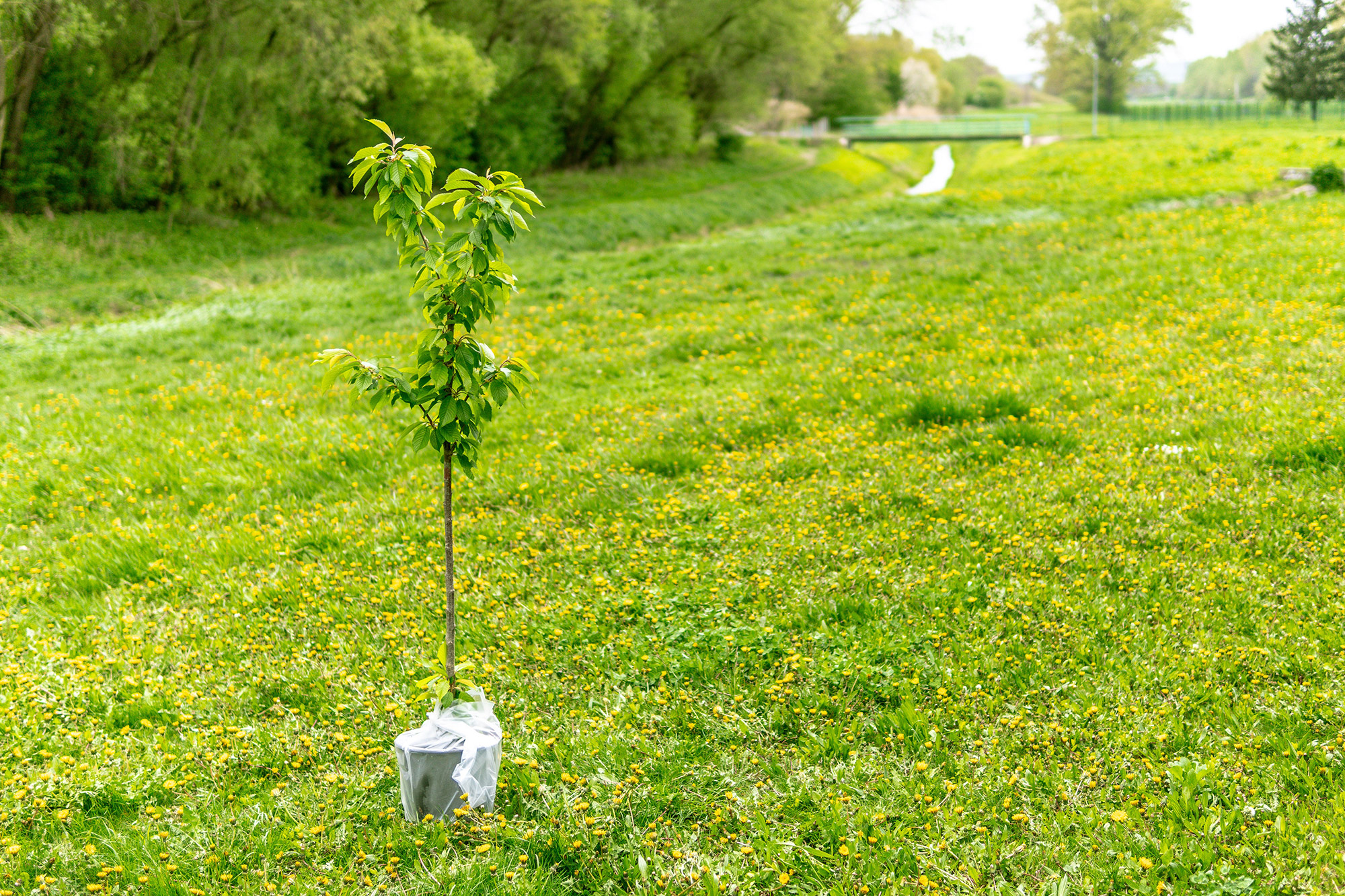You’ve picked your tree and you’re ready to dig! Well, not just yet. First, find out whether your community has bylaws that govern tree planting near property lines, or in public spaces like city parks. If you’re going to plant on your own property, consider the full lifespan—and mature size!—of your tree. Is the spot you’ve chosen far enough away from foundations, fences, and overhead powerlines? If so, you’re ready to go!
How to Plant a Tree
Different trees need different habitats… and sometimes, different planting procedures. In most cases, following the steps below will work just fine. If you’d like specific advice for your tree species, check online or with your local nursery.
- Check the weather. Deciduous trees can be planted as soon as the frost leaves the soil in spring; you can plant conifers until four weeks after deciduous trees leaf out. Both types of tree can be planted in autumn, right until freeze up.
- Dig that hole. You’ll need a hole two to three times wider than your tree seed or root ball, and about the same depth. Roughen up the edges of the hole so it’s easier for tree roots to wiggle through. If your soil contains a lot of sand or clay, now’s a good time to mix in a little compost.
- Green side up! Point your seed—or sapling’s leaves—straight towards the sky.
- Fill the hole about 2/3 full of soil, and gently pack it down to remove air pockets.
- Give your tree a drink! Fill the hole with water and wait for it to drain.
- Top up the soil, forming a mound around the tree’s roots.
- Unless you’re planting a tall tree, or in a very windy area, you can probably skip the stake.
- Planting more than one tree? Leave plenty of space between them to avoid crowding as they grow.
Helpful Tips
- Trees are perishable! Protect your tree during transport and plant it right away. If you have to delay, keep your tree in a shady area so the roots stay moist.
- In dry climates, mulch will help the soil retain water. Avoid root rot by keeping mulch at least 5 cm away from your tree’s trunk.
















































